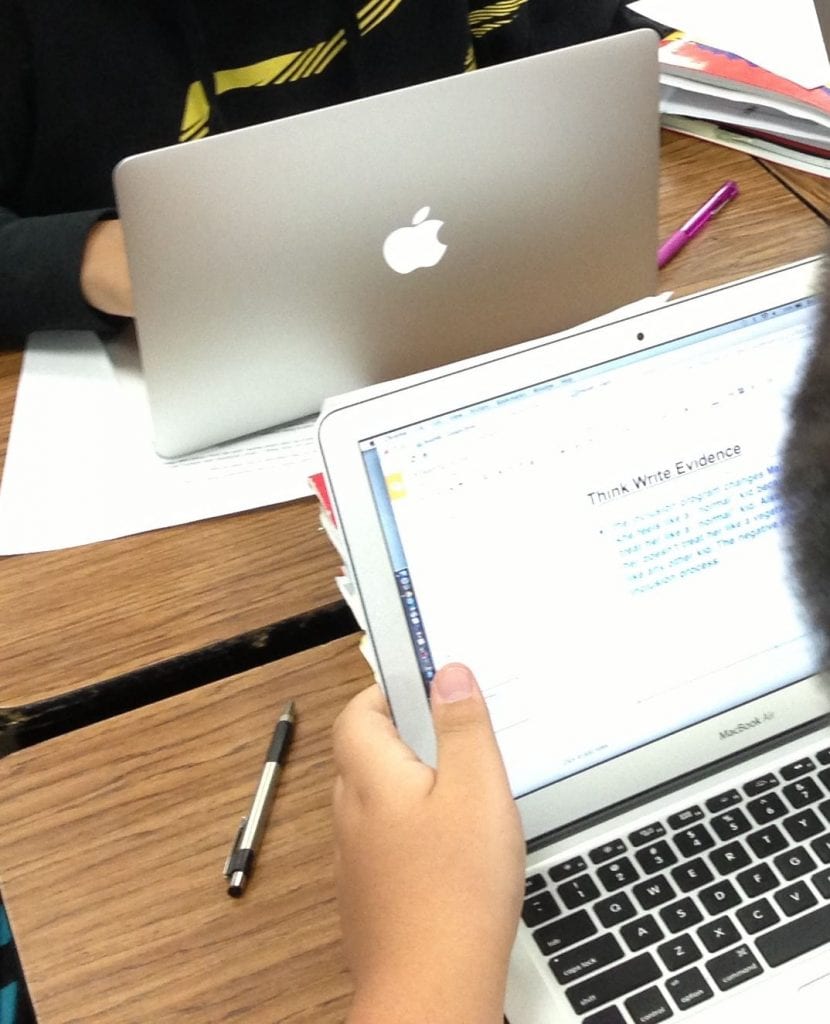Today, @Edublogs shared a question in a tweet:
Question for #blogging28 participants or other bloggers, what's your approach to publishing a post? Does it take you hours? Days? Weeks? Or do you write and publish in one sitting?
This Q is inspired by a question from @khollow here https://t.co/iM1EfyPYF4
— Kathleen Morris (@kathleen_morris) January 10, 2019
So I popped on over to Kirsty’s blog post, “Blogging in 2019” and discovered two things in the comments:
- that Sue Waters had shared her story
- from which Kirsty found her own answer
keep my momentum going.
First Two Things
I think that’s the first thing: get a momentum going. Schedule a time in your calendar with a reminder that keeps popping up to bug you. And with that, get our #blogging28 for Jan 7: Start a list of blog post ideas. That way, you can choose an idea and let it soak up some connections in the background of your brain so sitting down to write actually happens.
For me, I keep ideas for blog posts by emailing to a separate blog tweets that are interesting to me. I call that blog So, Consider because, as my sidebar explains there:
Tweets tell tantalizing tidbits of thoughtful things for us to take and make more — more ideas, more creations, more lessons, more connections, more sharing, more reflection. So. Consider this curation of tweets: I found them important, creative, thoughtful, useful… etc.
Now, when I’m thinking about an idea, I can use the search bar there for related tweets filled with resources. Here’s a search there for Formative Assessment, something many of us are interested in.
Getting It Written
But Kirsty asks HOW we actually get to writing and publishing our posts. My process varies, and I’m certain that there are as many answers to this question as there are bloggers!
When I have my momentum going, I let the ideas float around in my brain awhile, maybe for the morning, maybe one idea takes couple days. I look for related ideas in tweets. I might think about my reaction and how it fits in my situation; I might read others’ blogs on the topic or an article.
Or, I might just start typing. I’ve been blogging for a while, so I have quite a media library filled with pics I can recycle, and that is helpful, because an image is important.
Sometimes I take time to doodle or create an image that fits before I even start, and that helps me consider what I want to say as I create the image. Note: I take the time — that’s an issue for some.
Most times, my ideas change as I write because writing helps me consider different angles, my students, my family, my PLN. I stretch ideas while I write and reflect on the ideas because writing helps me understand more about what I’m writing.
MY BIG PROBLEM:
I write too much. I think I have to explain the whole story, and maybe that comes from working with my friends, my parents, and my students who are Native Americans — because the whole circle of the story is important to understanding where I come from so the listener [reader] understands the big picture. But I’m learning to just write about one topic, one thing, and break all those pieces into different posts. [Nod to Richard Byrne on that; I took one of his blogging courses, and he was clear on that: one big idea: lots of related posts.] That’s important for your readers too.
But the main thing is: just write.
This Post’s Process– Get It Written
I have seventeen tabs open in Chrome right now as possible content for this post. I want my posts to be of value– and so sharing resources is important. When Kathleen asked
what’s your approach to publishing a post? Does it take you hours? Days? Weeks? Or do you write and publish in one sitting?
a flood of ideas poured:
- time / schedule
- have ideas
- connect with other bloggers
- connect with other writers
- form a support group
So I found references for each of those ideas from my own experience– they’re ready to add as resources as I type.
I chose to use my media library for the image after I took a while considering the title. I would like to be more creative in writing titles…but.
To keep my focus, I just started with that tweet and here we are.
Support Groups
In order to keep the momentum, find a way to connect with others on a topic, course, challenge so you keep going, like #blogging28.
Examples:
- In my menu above, for one example, is #cccwrite, a course I took last year on blogging [First Post].
- Follow blogs of similar interest or hashtags, like my #clmooc friends who decided on a 30 day challenge #modigiwri together. Here’s an example of how we remix each other’s ideas: Thank You Kevin [and Daniel and Sarah] for carrying the idea forward: Heart Maps.
- Join with others in creating something: My friend Carol Varsalona gathers together poetry and images from other bloggers and posts them on her blog as global poetry galleries: it’s lovely. BeyondLiteracy
- And Margaret Simon is part of a Poetry Friday Roundup; See information here
- Margaret led me to Leigh Anne Eck’s LetsWrite2019 Challenge, who are “meeting” to reflect on their goals four times during the year; check that out.
- Always check out Edublogs for any of their challenges or clubs.
- How about Quad Blogging but for Teachers? Form a cohort of bloggers and create your own schedule/comment/ideas together.
To Write:
Think, Write, Share evidence/resources.
Be a connected learner: connect, learn, share, remix, repeat.
Find your flow
— of time, ideas, friends —
and let your writing grow!
photo: pixabay CC0 [a place for free images]
WC: 913
Day 20
This post is part of a 30-day challenge to reflectively write and post at least 150 words with the hashtag #modigiwri, which started with Anna here. Join us and here goes!
I’ve also joined the #blogging28 challenge by Edublogs, thanks to Denise’s tweet.



This is soooo helpful, Sheri! Thank you! And I love the quote at the top of your blog!
Kirsty, It was a great question, and one I often thought about as began blogging years ago. Thanks for asking! ~ Sheri
Kirsty, that quote was on the wall in big script in my classroom. My students would ask on the first day what it meant, and then through the year, they would repeat it to me often, “Writing IS hard fun, Ms Edwards.”
Hi Sheri,
I’m assuming Richard’s referring to a series of posts vs one post? It is possible to write too much and sometimes it is better to take one big idea and break it into a series of posts. However, long form posts where everything is included in the one post can be very popular. Ultimately it’s possibly more about what you are trying to achieve and the type of content you are sharing in the post.
Post titles are what I struggle with the most. I add a placeholder post title while I write the post and replace it with the final title just prior to publishing. I’m currently working my way through Agatha Christie novels as part of my personal reading challenge – it makes me feel better knowing that many of her novels have had different titles. Some were changed to be more culturally appropriate but others were just changed.
“In order to keep the momentum, find a way to connect with others” – I like the idea of a quadblogging for educators! Hadn’t considered that. Especially if it models the importance of the commenting component.
Sue
@suewaters
Thanks Sue. Those titles! Arrggh. But it’s part of the process. I think that the commenting is so important too, and that is one way to connect and keep up the momentum, especially if we comment and than carry on the conversation in some way — create a picture summary or write on one’s own blog and then share it back to the originator of the conversation. Always love your points and experience about learning and blogging. Take care, Sheri